The Surreal Details of Impossible Sculptures
5 astonishing artworks you won’t believe are real...
The modern world is filled with marvels. We have built bridges that defy gravity, machines that think, and networks that bind the globe together in an invisible web of information.
Yet, for all our advancements, for all our technological wonders, we still turn back — sometimes hundreds, sometimes thousands of years — to witness true artistic mastery.
To find awe, we must look to the past…
Turning Stone Into Flesh
Sculpture, at its highest form, is alchemy.
It is the transformation of cold, unyielding stone into something living, something breathing. It is the impossible made real. As Alexander Pope so brilliantly put it:
Then marble, soften'd into life, grew warm.
We walk through museums and churches, past the silent sentinels of marble and bronze, and in a moment of quiet recognition, we understand: the artists who shaped these figures, who coaxed the softness of skin from the hardness of rock, who carved veils so ethereal they seem to dissolve upon the surface, possessed a mastery we cannot match…
A Lost Art: Is the Past Beyond Our Reach?
Yes, there are certainly many great contemporary sculptors striving to reach the heights of the past.
Artists like Jacopo Cardillo (born 1987), known as Jago, with his extremely detailed and precise sculptures, or Håkon Anton Fagerås, with his eerily lifelike marble pillows, are undeniably talented.
Yet, no one alive today is capable of achieving what we once were. It’s not just a matter of technical skill — it's as if something deeper is missing from these modern sculptures, something intangible, something like a soul...
When we stand before the works of Michelangelo, Bernini, Corradini, we cannot help but wonder — how did they achieve this? How did a block of marble yield veins that seem to pulse beneath translucent skin?
Michelangelo himself, upon completing his statue of Moses, was so amazed by its lifelike presence that he allegedly struck it on the knee with a hammer and exclaimed, "Why do you not speak?!"
When we stand before these sculptures, we do not simply admire them — we are unsettled by them, because they reveal the limits of what we believe to be possible.
In an era where digital tools make creation instantaneous, these sculptures remind us of a different kind of mastery — one that required decades of study, infinite patience, and the intimate knowledge that every strike of the chisel was irreversible.
There was no undo button, no safety net. Only the artist and the stone, locked in a struggle between force and finesse, destruction and creation.
These sculptures belong to an era when art was a discipline of devotion, when hands worked tirelessly to translate the divine into the earthly, when mastery was pursued not for fleeting recognition, but for eternity.
Today, we race forward, obsessed with the new, the immediate, the ephemeral. But when we pause — when we allow ourselves to stand before these impossible masterpieces, to trace the folds of a veil carved from stone, to see fingers sink into flesh that is not flesh — we understand that some things transcend time.
And perhaps, just for a moment, we remember what it is to be truly in awe…
1. Veiled Christ by Giuseppe Sanmartino (1753)
The marble veil in Sanmartino's magnum opus is so astonishingly lifelike that the artist was accused of using alchemy to turn fabric into stone.
Antonio Canova was so impressed by this sculpture that he tried to acquire the work, stating that he would gladly sacrifice ten years of his life to have created something of such otherworldly perfection.
2. Psyche Revived by Cupid's Kiss by Antonio Canova (1787–1793)
To put that statement into perspective, this is what Canova himself was capable of:
The wings of Cupid are so delicate that when sunlight touches them, they shimmer with a gentle, peach-toned glow.
3. Giuliano Finelli's bust of Maria Duglioli Barberini (1626)
A lesser-known yet equally remarkable masterpiece…
Finelli demonstrated the unreal ability to turn marble into lace.
4. The Abduction of Proserpina by Gian Lorenzo Bernini (1621–22)
If you look closely, you can spot two tears flowing from Proserpina’s eyes.
Crafted when Bernini was only 23 years old, this sculpture portrays the abduction of Proserpina by Pluto, the ruler of the underworld.
The piece is revered not only for its technical virtuosity but also for the raw emotion it conveys. Among its many remarkable details, Pluto’s hand gripping her thigh is considered one of the most beautiful in the history of art.
5. Michelangelo's David (1501-1504)
Over a century before the circulatory system was fully understood by medical science, Michelangelo perfectly sculpted the jugular vein in his statue of David.
Cardiologist Daniel Gelfman of the Marian University College of Osteopathic Medicine in Indianapolis explained:
"Like some of his artistic contemporaries, Michelangelo had anatomical training. I believe he must have noticed temporary jugular venous distension in healthy individuals who are excited. At the time the David was created, in 1504, William Harvey had yet to describe the true mechanics of the circulatory system, which did not occur until 1628."
This exquisite anatomical detail is remarkably accurate because it reflects the intense emotion of the biblical hero as he prepares to face Goliath. It is yet another testament to the unparalleled genius of a man who is often regarded as the greatest artist of all time.
In a sonnet, Michelangelo wrote:
The stone unhewn and cold
Becomes a living mould,
The more the marble wastes
The more the statue grows.





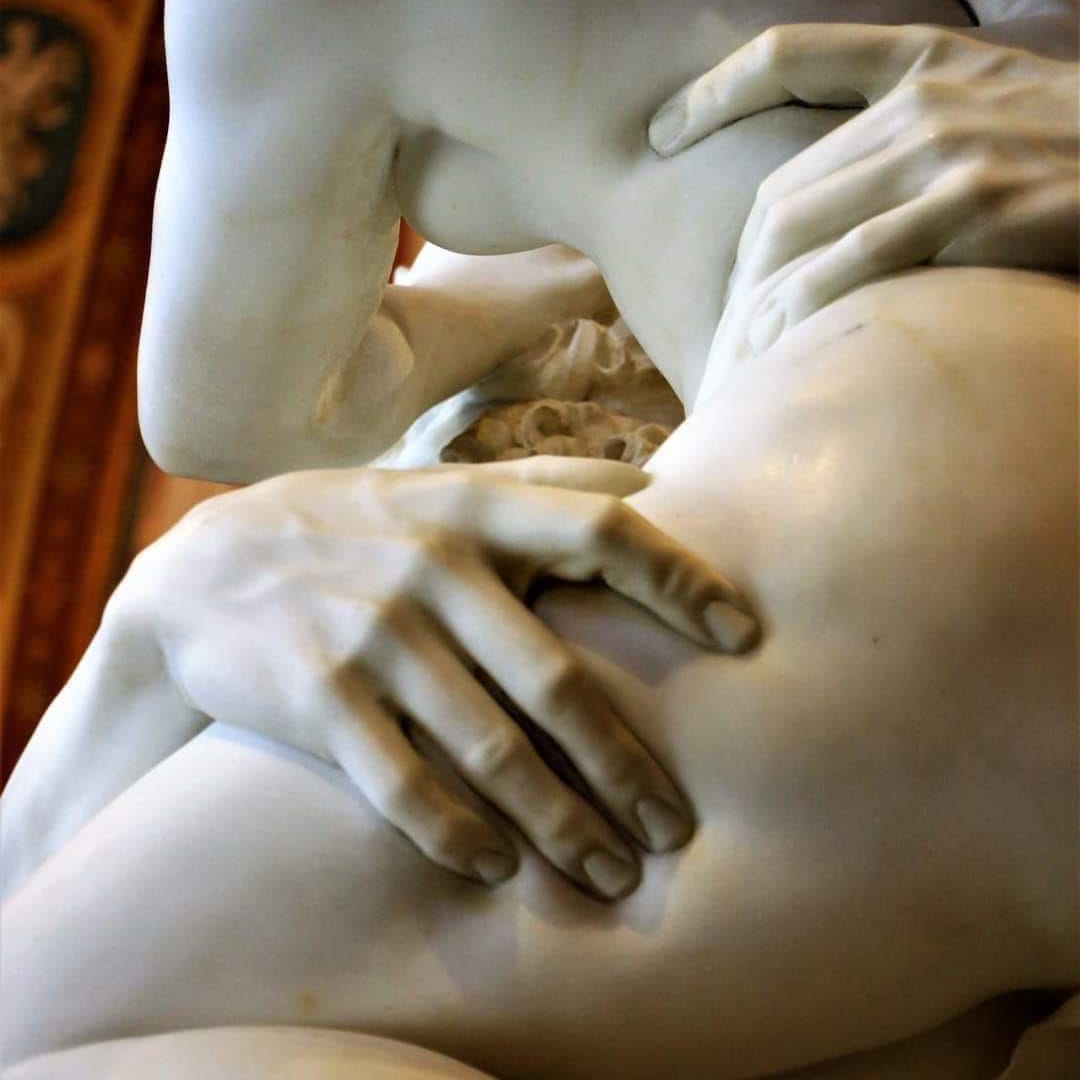
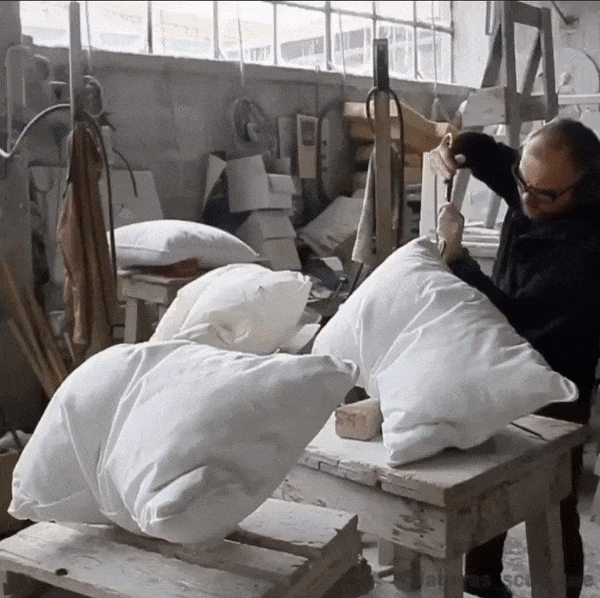
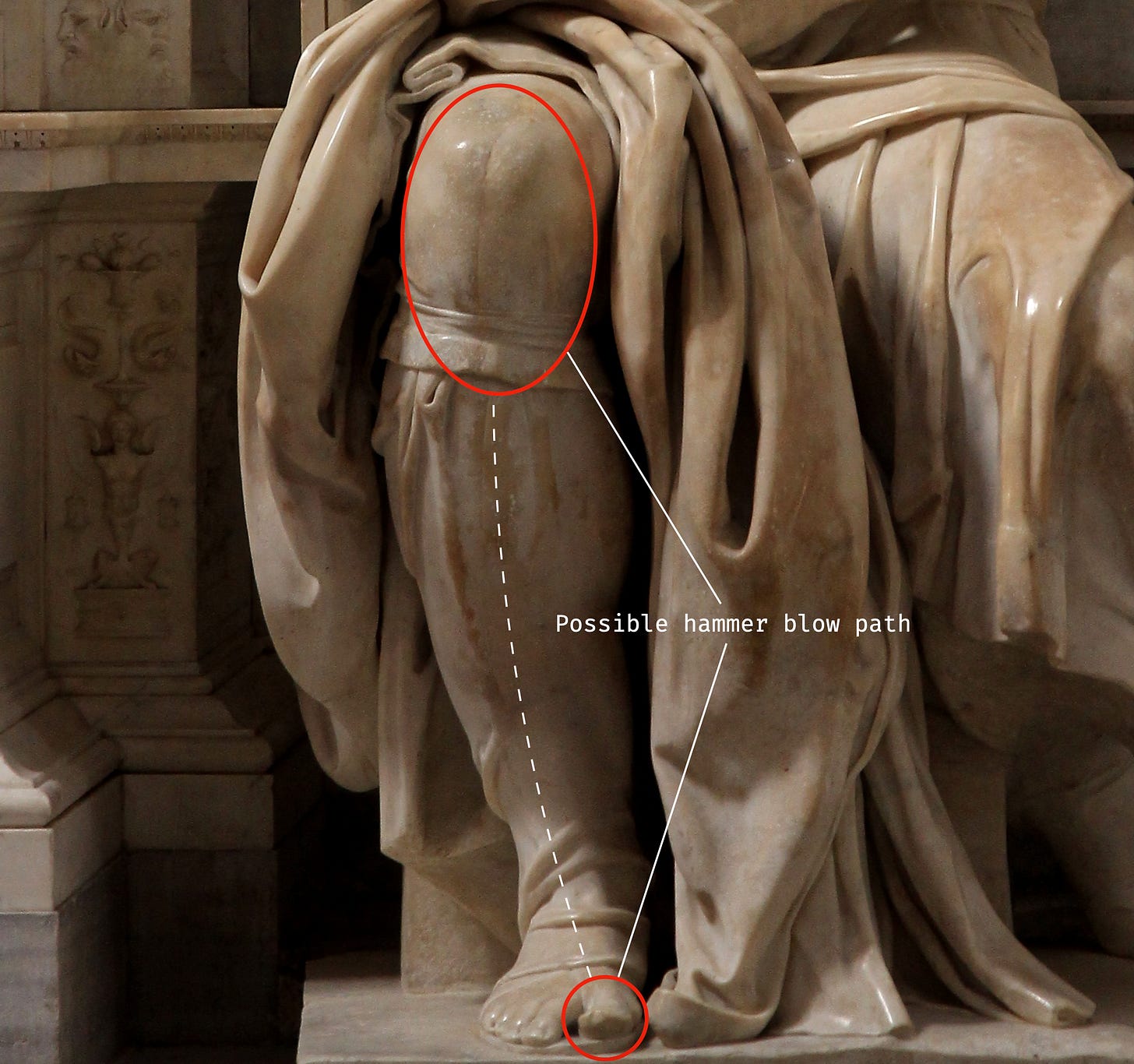

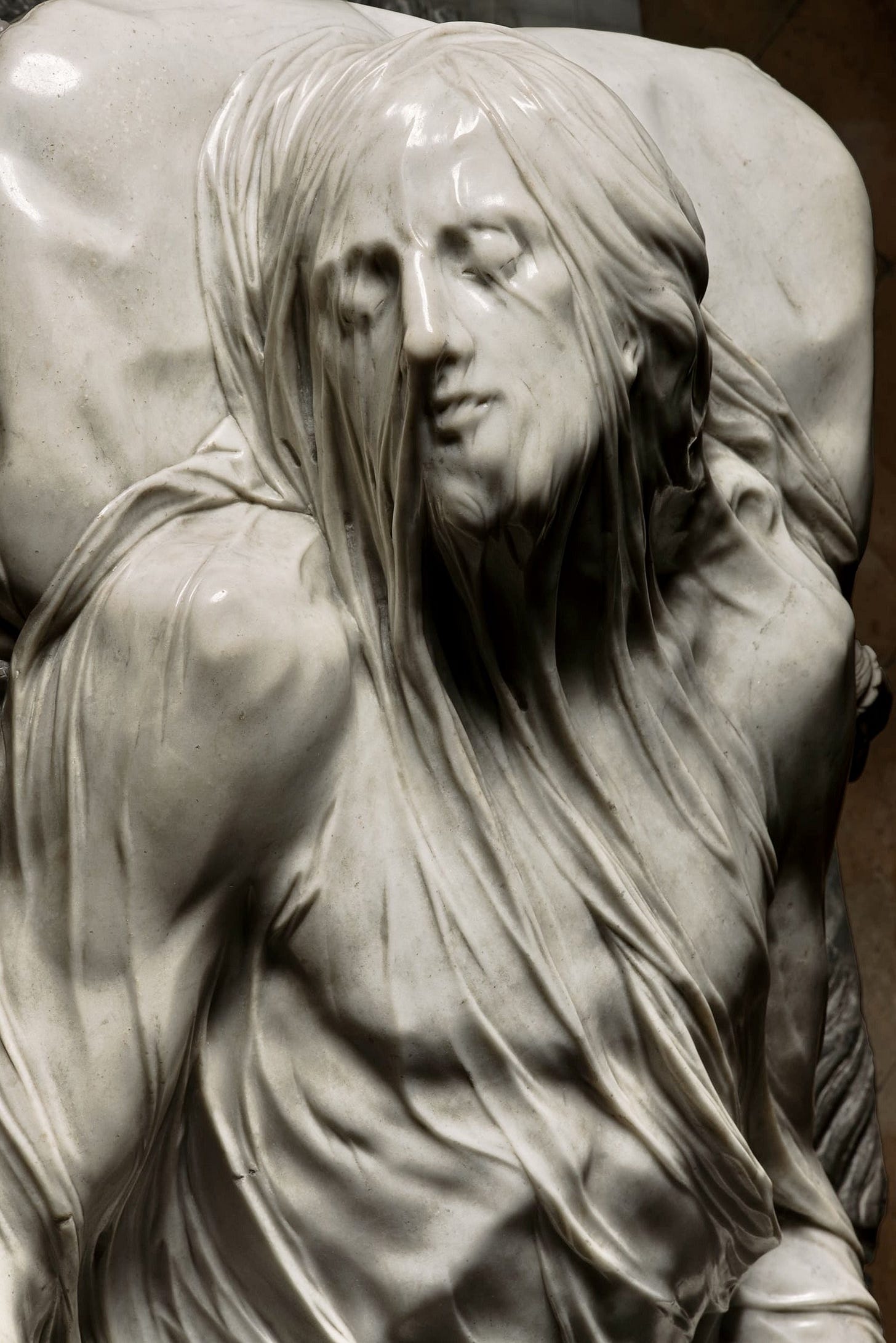
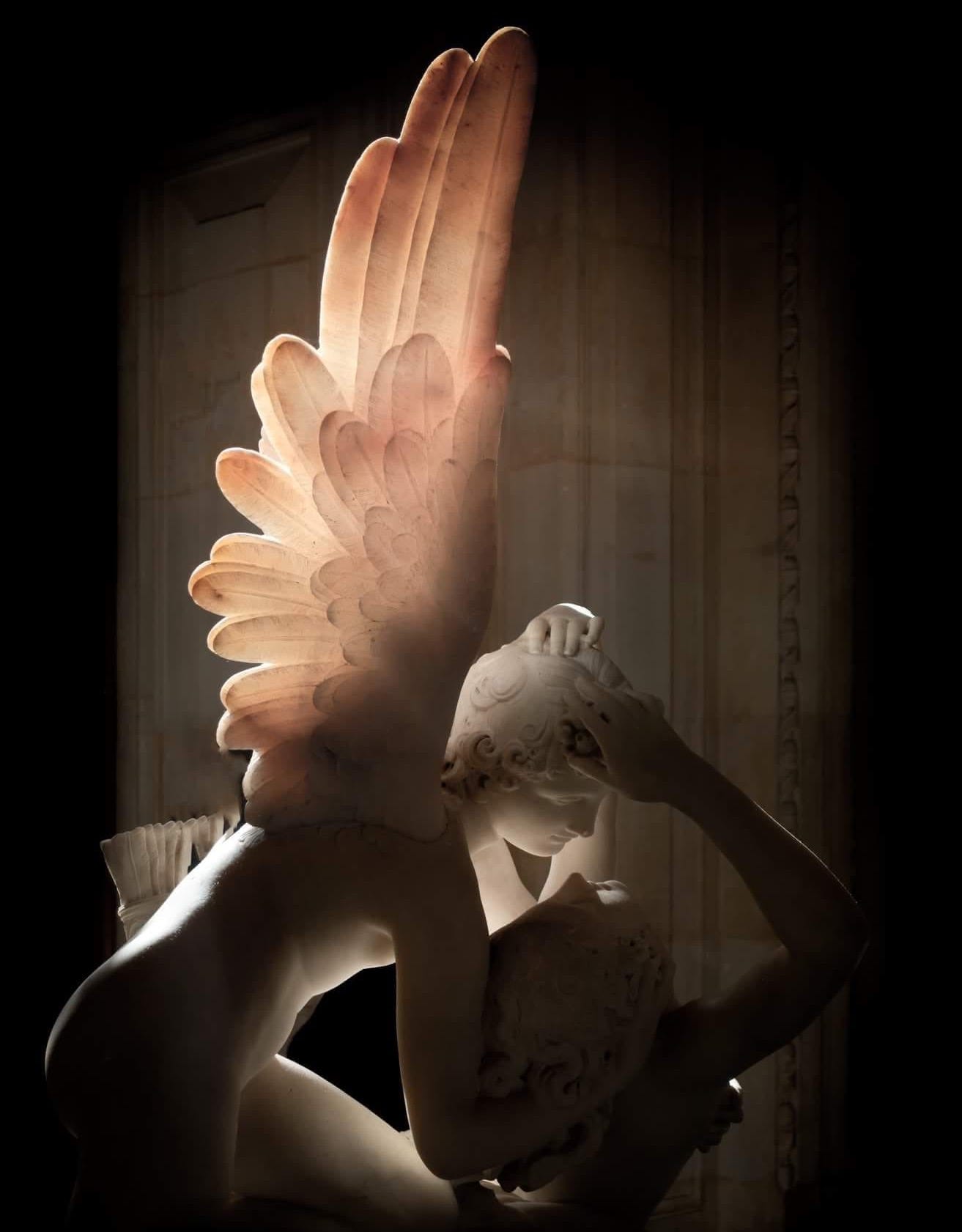

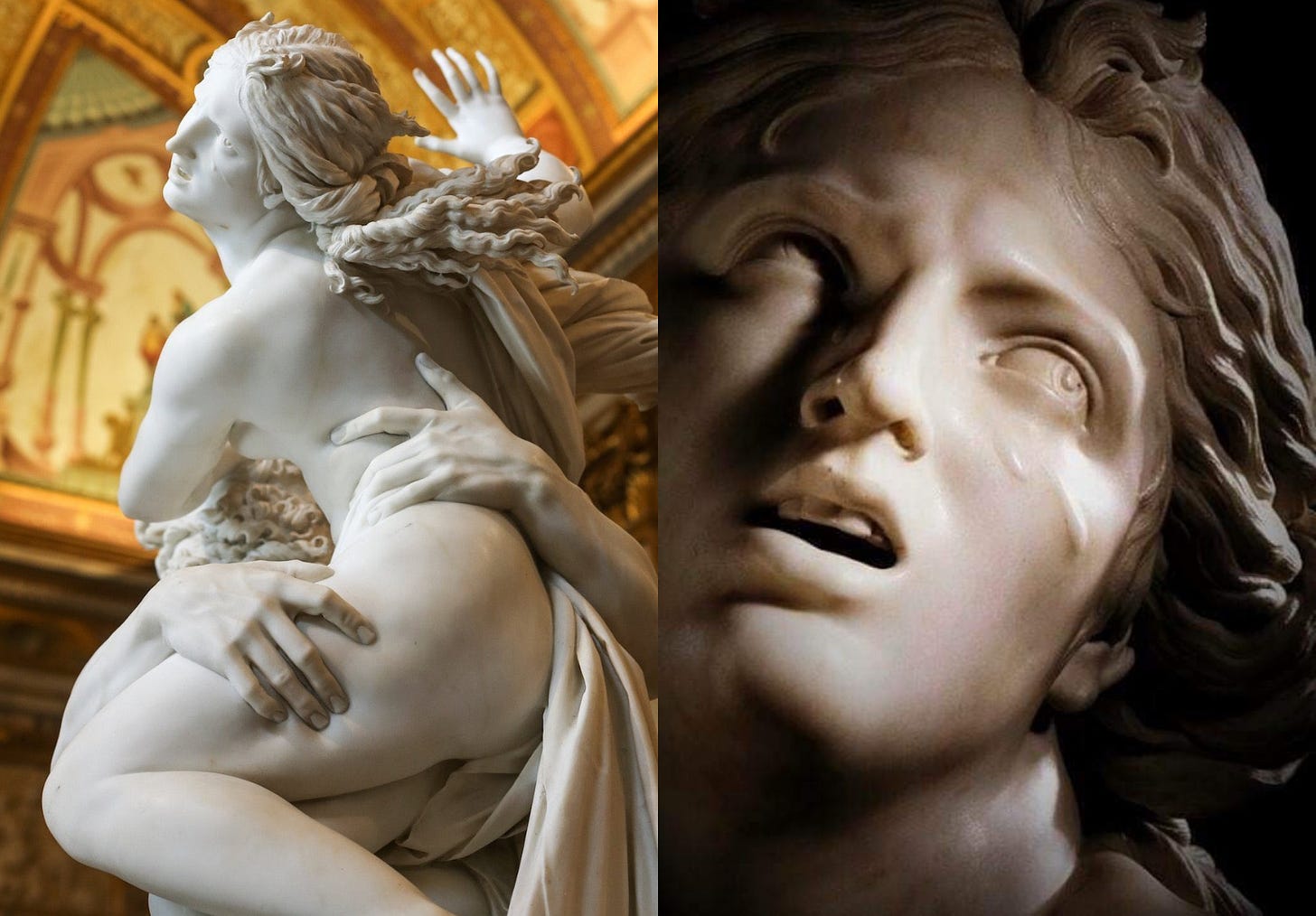
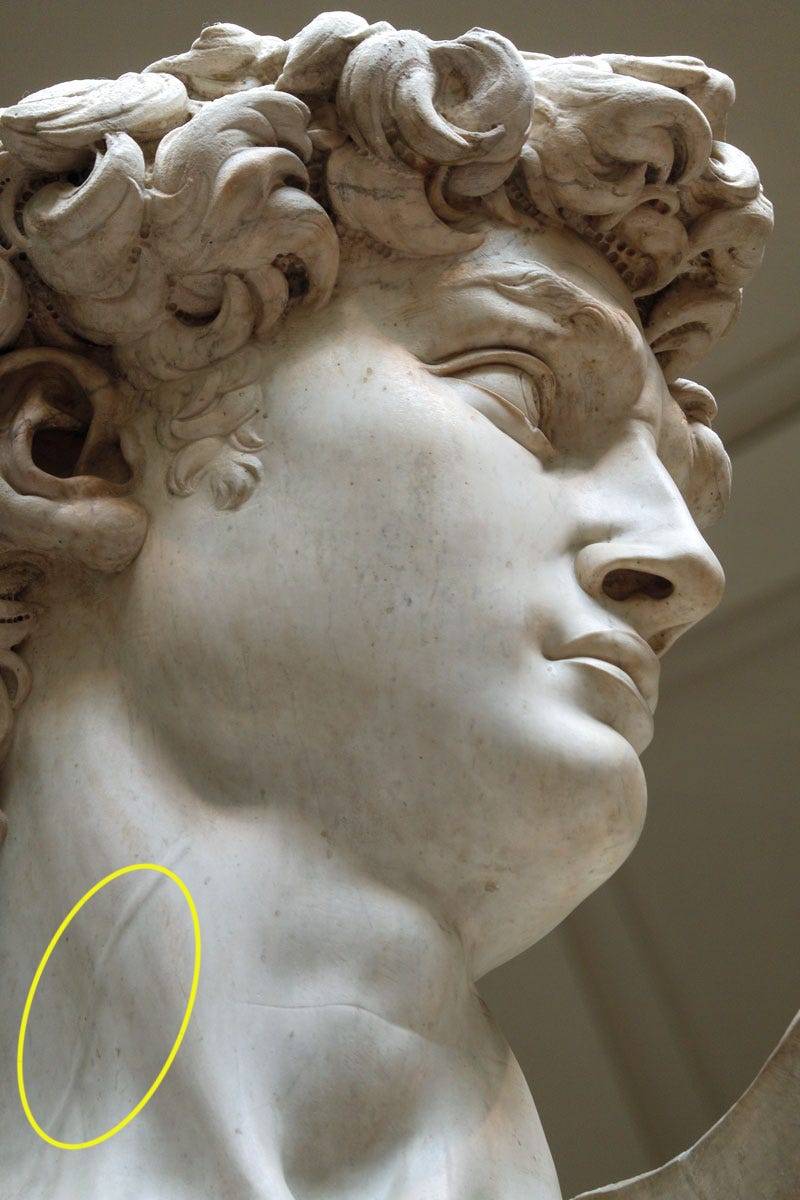
I agree, we haven’t emulated the mastery of the Ancient Egyptian’s, Greeks and Romans. And we’re now outsourcing our creativity to AI, death by a thousand cuts.
This felt like a spiritual experience in prose. The way you describe sculpture as “alchemy” — it’s dead-on. Standing before Bernini’s Proserpina or Sanmartino’s Veiled Christ really does shake your sense of reality. It’s not just about skill… it’s about presence, reverence, something almost sacred that modern tools can’t replicate.